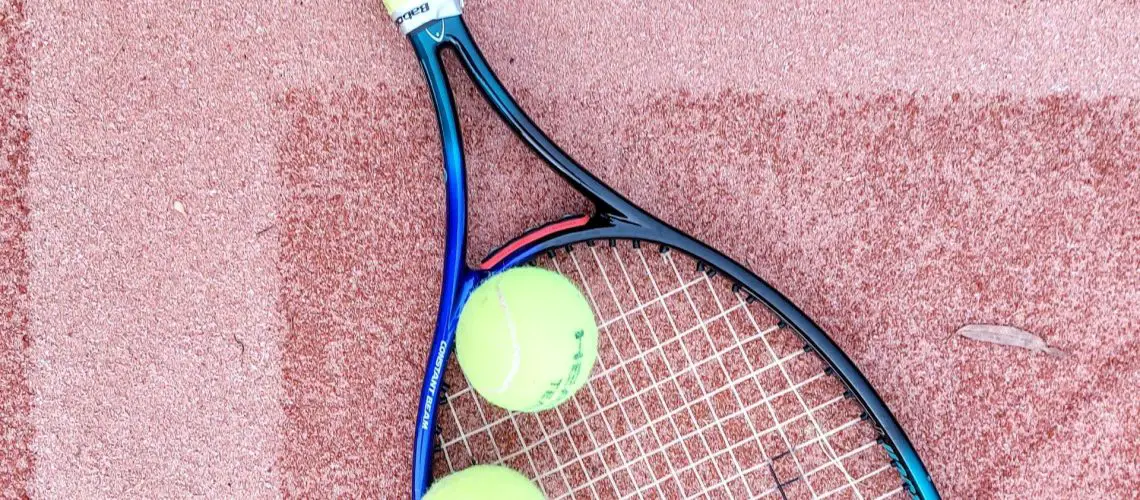We may earn money or products from the companies mentioned in this post.
Introduction

When it comes to shipping tennis rackets, proper packing and shipping methods are of utmost importance Tennis enthusiasts rely on their rackets for peak performance on the court, and any damage during transit can be disastrous In this article, we will explore the significance of ensuring proper packaging and shipping for tennis rackets, the consequences that can arise from poor methods, and provide a step-by-step overview of how to pack and ship them safely
The Importance of Proper Packing and Shipping for Tennis Rackets
Packing and shipping tennis rackets securely is essential to preserve their integrity and functionality These sporting equipment pieces are designed with delicate materials that require extra care during transportation By utilizing suitable packaging techniques, you can protect your racket from potential damage caused by rough handling or accidental drops
Moreover, proper packing ensures that your racket remains in optimal condition throughout its journey The last thing you want is to arrive at a tournament only to find your racket warped or broken due to inadequate packaging By taking the time to pack your racket carefully, you can maintain its structural integrity and prolong its lifespan
The Consequences of Poor Packaging or Shipping Methods
Failing to pack or ship a tennis racket correctly can result in numerous negative consequences Firstly, improper packaging may lead to physical damages such as cracks in the frame or strings getting tangled These damages not only affect the performance of your racket but also incur additional costs for repairs or replacements
In addition to physical damages, poor packaging can also result in delays or loss during transit Insufficient padding or protection may cause your package to get bumped around excessively during transportation, increasing the risk of misplacement or even complete loss
An Overview of the Step-by-Step Process
-
Gather the necessary materials:
Start by gathering all the required packing materials, including a sturdy box, bubble wrap, packing tape, and any additional cushioning materials -
Disassemble your racket (if applicable):
If your racket can be disassembled into separate parts, carefully remove the strings and detachable components to ensure they remain protected during shipping -
Wrap the racket:
Begin by wrapping your racket with a layer of bubble wrap or protective foam Pay extra attention to covering vulnerable areas such as the frame and handle -
Add additional padding:
Place additional padding around the wrapped racket to provide further protection This can include using foam peanuts or crumpled paper to fill any empty spaces in the box -
Securely seal the box:
Once everything is properly packed inside the box, use high-quality packing tape to securely seal it Make sure all edges are sealed tightly to prevent any accidental openings -
Label and address the package:
Clearly label your package with both sender and recipient addresses Include any necessary tracking information if available -
Select a reliable shipping service:
Choose a reputable shipping service that specializes in handling fragile items like tennis rackets Consider opting for insurance coverage for added peace of mind
Following these steps will help ensure that your tennis racket arrives at its destination intact and ready for action By investing a little time and effort into proper packaging and shipping methods, you can protect your valuable equipment from potential damage and enjoy uninterrupted play on the court
Preparation and Packing Materials
When it comes to preparing and packing your racket for shipping or storage, there are a few important steps you need to follow One of the first things you should do is measure the size and weight of your racket By doing this, you’ll be able to determine the appropriate box size needed for safe transportation
Determining the Appropriate Box Size
Choosing the right box size is crucial to ensure that your racket fits snugly without being too cramped You don’t want it bouncing around during transit, potentially causing damage Measure the length, width, and height of your racket and find a box that provides enough space to accommodate it comfortably
Considering Extra Space for Padding Materials
In addition to finding a box that fits your racket’s dimensions perfectly, it’s essential to leave some extra space for padding materials Bubble wrap or foam padding can help protect your racket from any potential impacts or vibrations during transportation By leaving some room for these materials, you can ensure that your precious equipment remains safe and secure throughout its journey
Gathering Necessary Packing Materials
Once you have determined the appropriate box size and considered extra space for padding materials, it’s time to gather all the necessary packing supplies Here are a few items you’ll need:
-
Bubble Wrap or Foam Padding:
These cushioning materials will provide an extra layer of protection against any accidental bumps or drops -
Packing Tape:
Use strong packing tape to seal the box securely so that it doesn’t accidentally open during transit -
Scissors or Cutting Tool:
You’ll need these tools to cut bubble wrap or foam padding to the desired size, ensuring a perfect fit for your racket -
Shipping Label and Marker:
Don’t forget to label your package with the appropriate shipping information to ensure it reaches its destination without any issues
By following these steps and gathering the necessary packing materials, you’ll be well-prepared to safely transport or store your racket Remember, proper preparation is key to keeping your equipment in top condition and ready for action!
Step-By-Step Packing Process

When it comes to packing your tennis racket for travel, taking the necessary precautions to protect its delicate parts is crucial By following a step-by-step packing process, you can ensure that your racket arrives at its destination unharmed and ready to hit the courts Let’s dive into the details!
Protecting the strings, head, and grip of the racket
The first step in safeguarding your tennis racket is to pay attention to its most vulnerable areas Begin by applying masking tape on the strings to prevent tension loss during transit This simple yet effective measure ensures that your racket maintains optimal performance upon arrival
To provide an extra layer of protection for the racket head, wrap it with bubble wrap This lightweight material acts as a cushion against any potential impacts or jolts during transportation
Placing additional padding within the box
Creating a cushioning layer inside the box is essential for further safeguarding your tennis racket Start by placing bubble wrap or foam peanuts at the bottom of the box to create a soft foundation Pay special attention to protecting all corners of the box, as they tend to be more susceptible to damage
While it may be tempting to stuff every available space with padding materials, it’s important not to overstuff the box Overpacking can lead to compression and potential damage if excessive pressure is applied during transit
Securing your tennis racket in place
Now that you’ve protected various parts of your racket and added extra padding within the box, it’s time to secure everything in place for a worry-free journey
Begin by wrapping your entire tennis racket with bubble wrap, ensuring that all parts are covered securely The snug fit of the wrapping material will prevent any unnecessary movements or potential impact damage
To ensure that the wrapping stays in place during transport, tape down any loose ends This extra step adds an additional layer of security and peace of mind, knowing that your racket will arrive intact at its destination
By following this step-by-step packing process, you can rest assured that your tennis racket is well-protected and ready for your next tennis adventure So pack with confidence and get ready to unleash your skills on the court!
Shipping Options & Tips

When it comes to shipping your valuable rackets, choosing the right carrier service is crucial You have several options to consider, including USPS, UPS, and FedEx Each carrier offers its own set of advantages and pricing options
Choosing an appropriate carrier service
To make an informed decision, compare pricing options based on your package dimensions and the destination address Take into account factors such as weight, size, and any special handling requirements By doing so, you can find the most cost-effective solution for shipping your rackets
Delivery speed preferences
Consider your delivery speed preferences when selecting a carrier service If time is of the essence, you might opt for expedited shipping to ensure your rackets arrive promptly On the other hand, if you’re not in a rush, standard shipping may be a more affordable choice
Insurance options for valuable rackets
Your valuable rackets deserve protection during transit It’s important to understand the insurance policies offered by each carrier to ensure your items are adequately covered in case of damage or loss
Carrier-specific insurance policies
Each carrier has its own insurance policies that outline coverage limits and claim procedures Familiarize yourself with these policies so that you know what protections are available for your valuable rackets
Purchasing additional insurance
If you want extra peace of mind or if your racket holds significant value, consider purchasing additional insurance beyond what is provided by the carrier This way, you can have added protection against potential damages or loss during transit
By carefully considering these shipping options and tips, you can ensure that your valuable rackets reach their destination safely and securely
The Importance of Proper Packing and Shipping for the Safety of Your Tennis Racket

When it comes to shipping your beloved tennis racket, you want to ensure it arrives safely at its destination Proper packing and shipping are crucial in protecting your racket from damage during transit By taking the time to pack it correctly, you can minimize the risk of any mishaps along the way
Recap of Steps and Materials Needed to Ensure a Secure Shipment
To guarantee a secure shipment for your tennis racket, there are several key steps and materials you should consider:
-
Tennis Racket Case:
Invest in a sturdy case specifically designed for tennis rackets This will provide an extra layer of protection during transportation -
Bubble Wrap or Foam Padding:
Wrap your racket with bubble wrap or foam padding to safeguard it against any bumps or jolts that may occur during shipping -
Box Selection:
Choose a box that is slightly larger than the dimensions of your racket case This will allow room for additional cushioning materials -
Cushioning Materials:
Fill any empty spaces within the box with packing peanuts, crumpled paper, or air-filled packaging materials This will prevent your racket from shifting during transit -
Tape:
Seal the box securely with strong packing tape to ensure it stays closed throughout its journey -
Fragile Label:
Attach a “Fragile” label on the package to alert handlers about its delicate contents
Encouragement to Take the Time to Pack and Ship Correctly for Peace of Mind
While it may be tempting to rush through the packing and shipping process, taking the time to do it correctly will provide you with peace of mind Imagine the disappointment of receiving your racket with damages that could have been avoided By following these steps and investing in proper packaging materials, you can rest assured knowing that your tennis racket is well-protected during transit
Useful Links

PSA: You can no longer use the 2 box method for shipping …
Shop Tennis Rackets | Wilson Sporting Goods
Racket FAQ
Tennis Racket
Squash, Badminton & Tennis Racquet (Racket) Postal Boxes
VTC305 Tennis Racquet
where to sell vintage tennis rackets
Tennis Racquets in Tennis & Racquets(1000+)
Babolat | Tennis, badminton and padel equipment (rackets …
How do you mail a tennis racket?
Tennis Rackets for sale in Portsmouth, Ohio
Prostocktennis – Pro Stock Tennis
Custom Stringing Service – Tennis-Point
Tennis Racquets | Free Curbside Pickup at DICK’S
Tennis Rackets
Racket Box – Pack of 5
Tennis Rackets
Tennis Rackets






